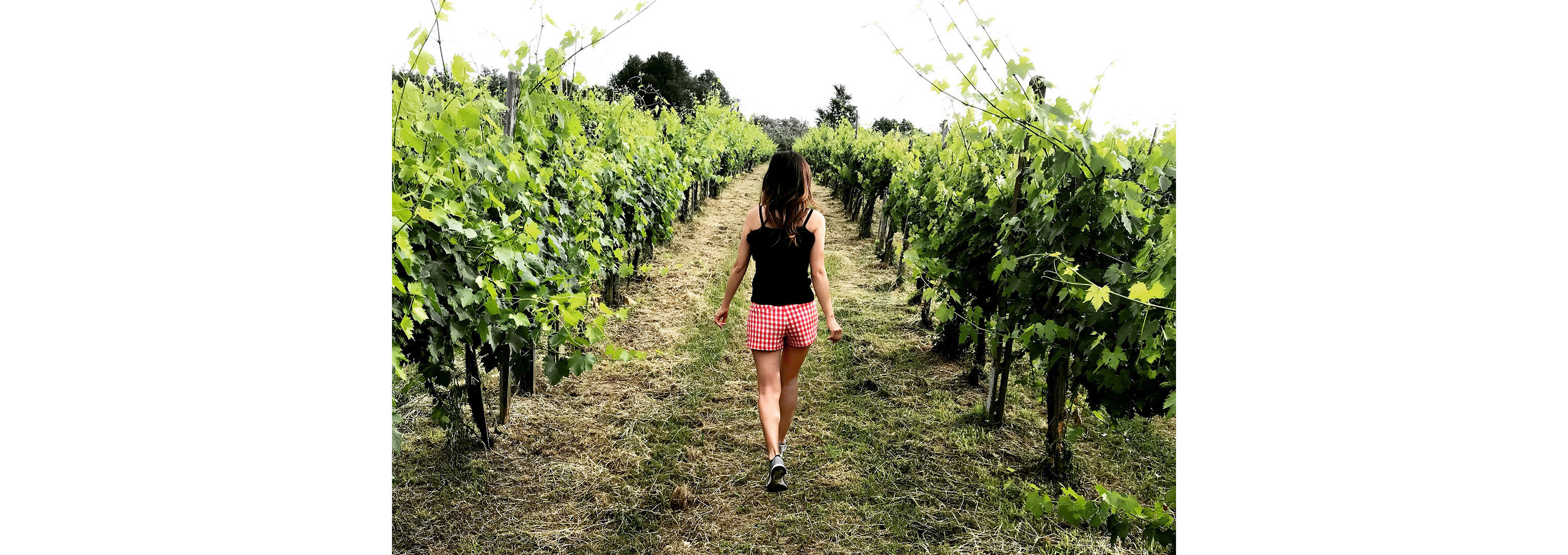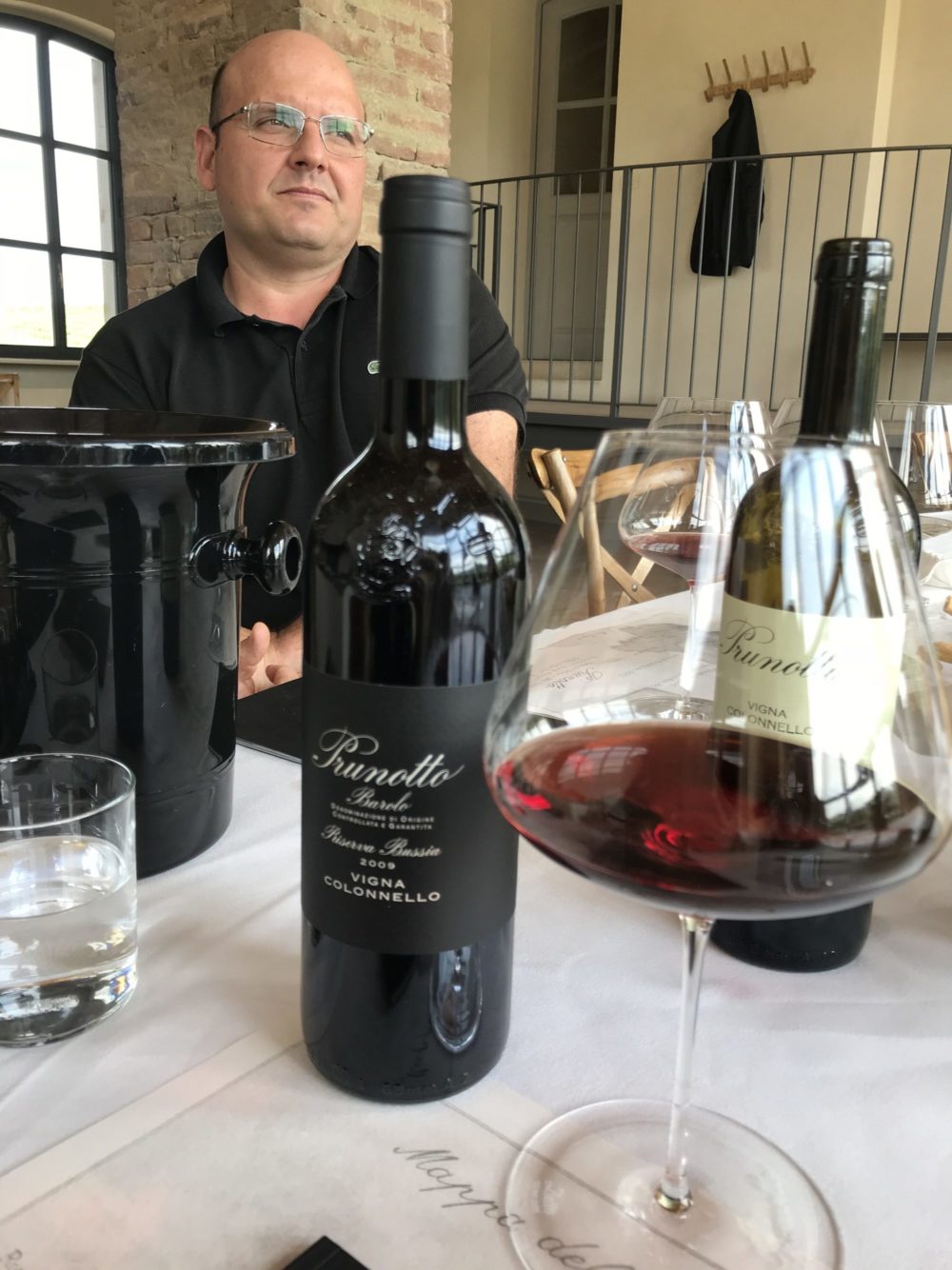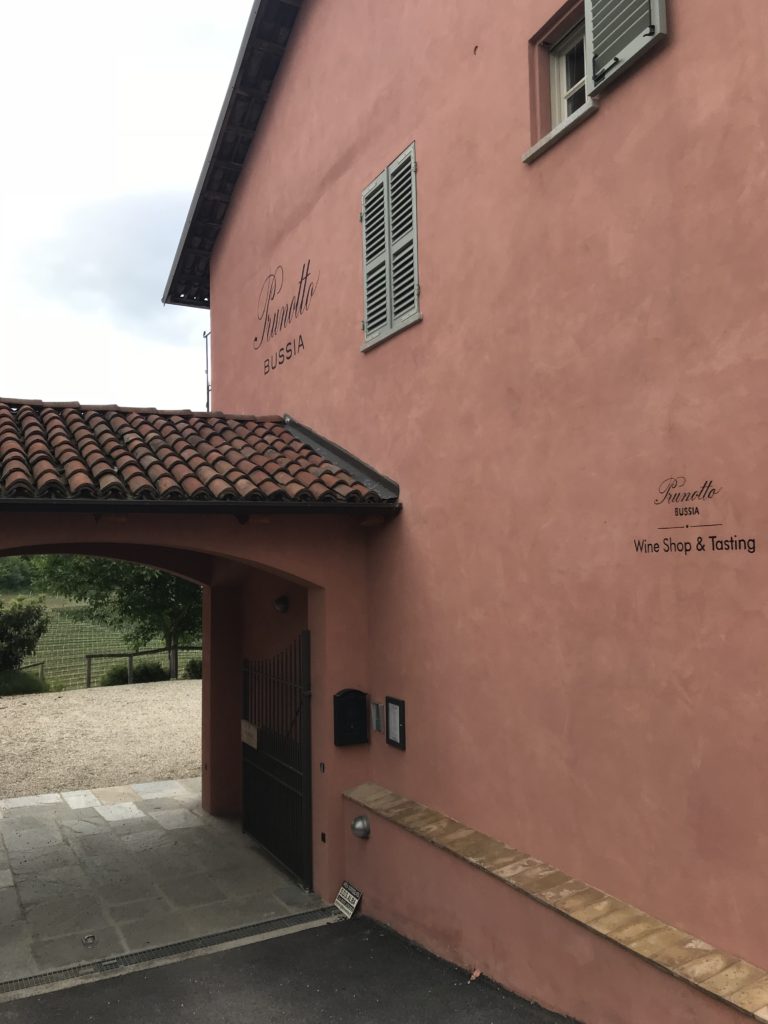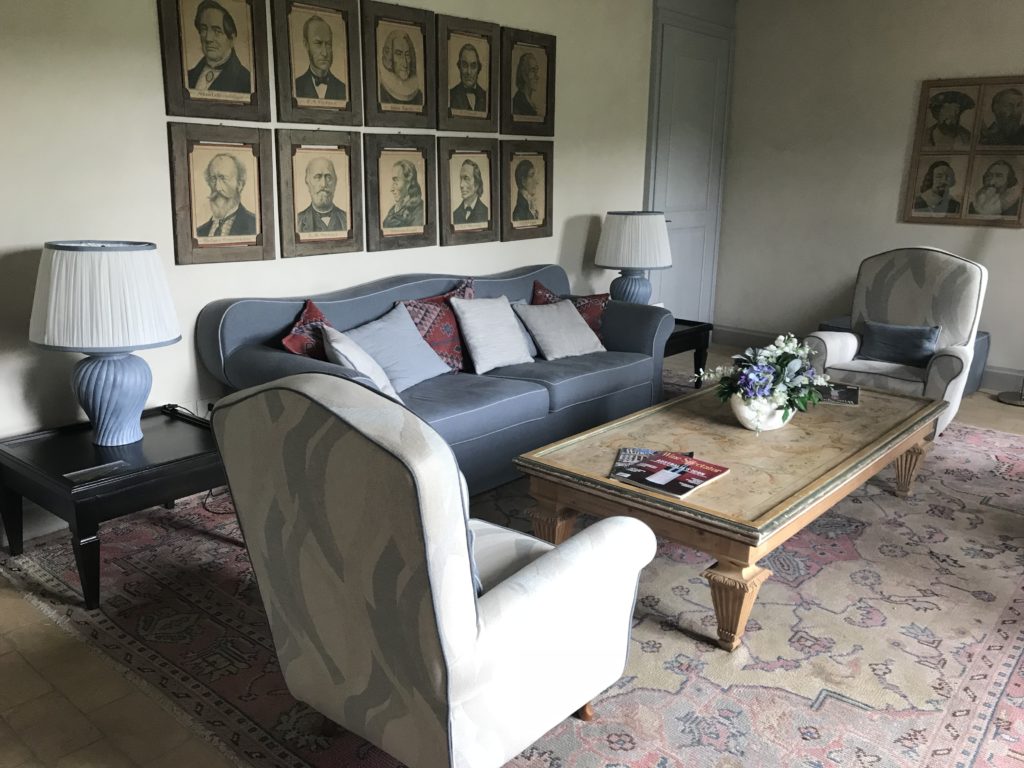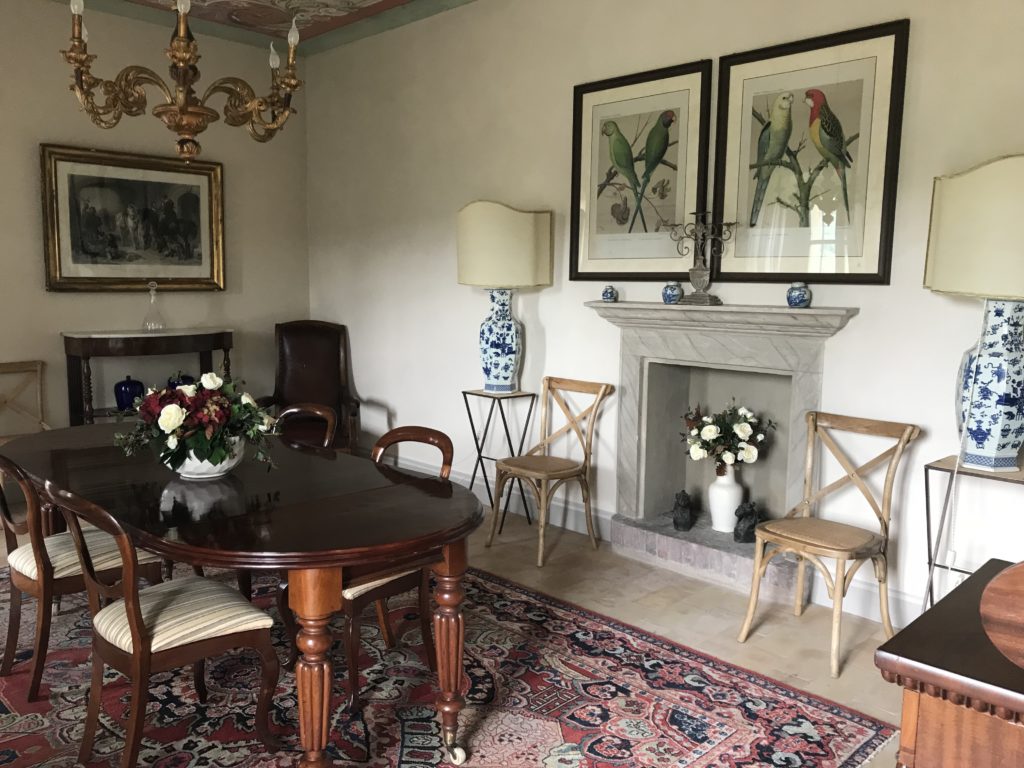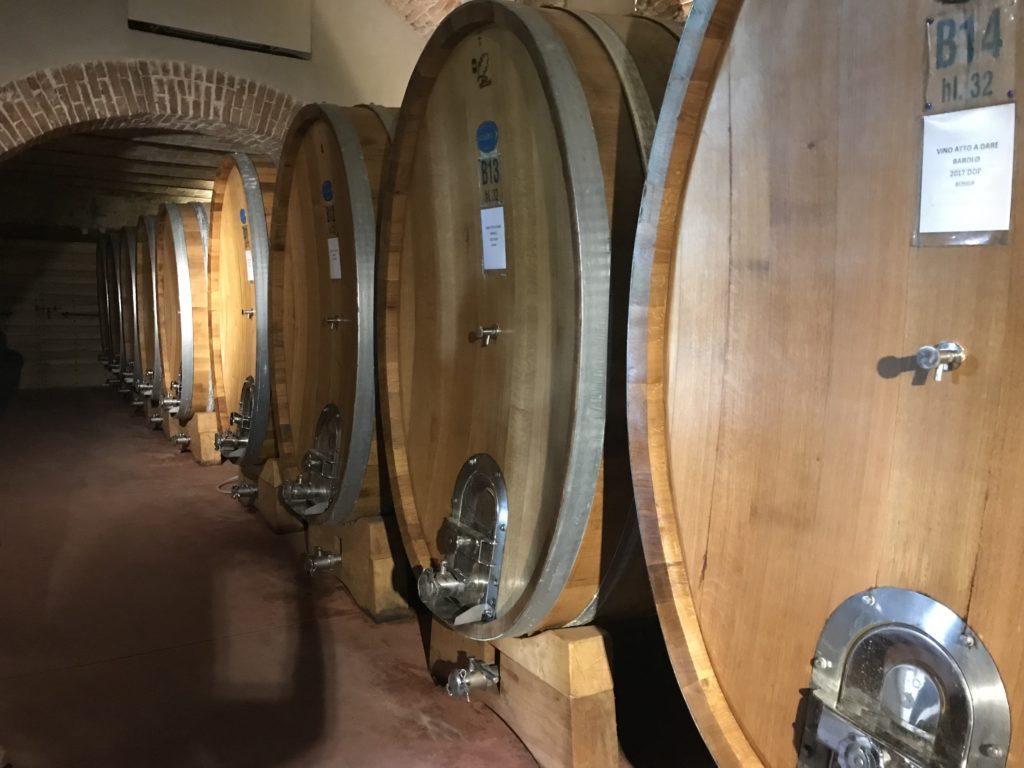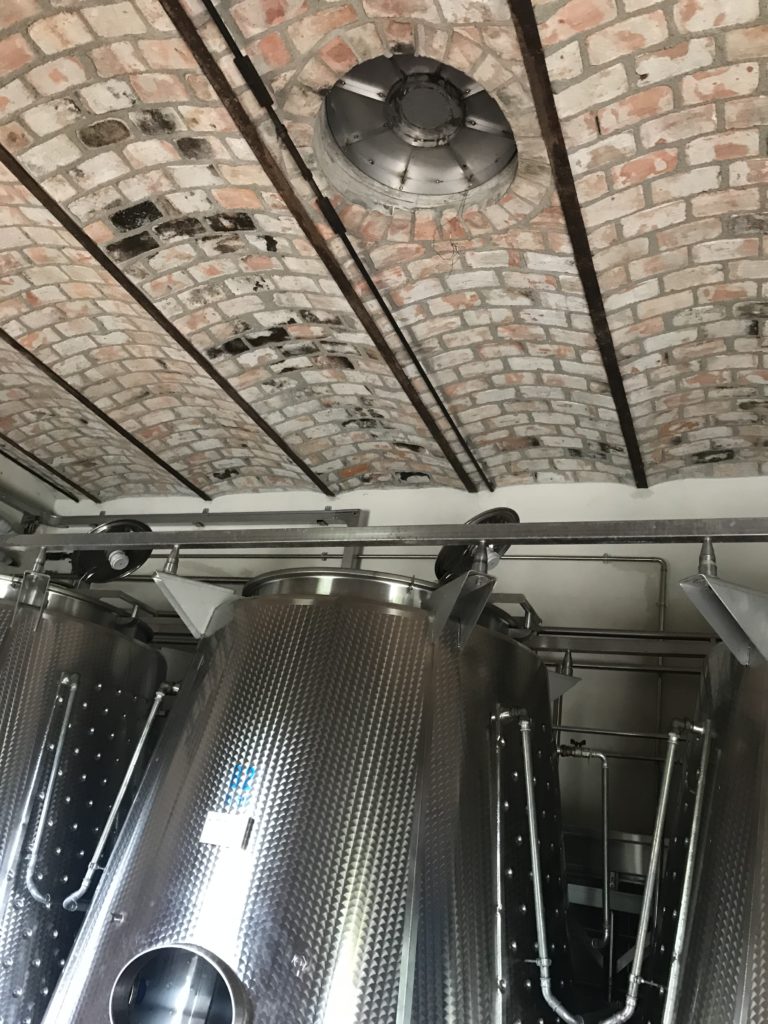The clouds over Bussia were putting on its best show that day in May. Sun rays burst through intermittent showers while layers of clouds morphed across the sky, casting deep shadows on the verdant Nebbiolo vines. Indeed, it was the perfect day to escape the spring rains and enjoy Barolo made from Prunotto’s tiny little vineyard, Colonnello.
The region of Barolo is made up of dozens of perfect little hills that greatly vary when it comes to soil types. The differences are reflected in the wine, which make drinking Barolo sublimely engaging. Colonnello is situated at the top of the Bussia cru. Its four-acre parcel is so small that only a handful of producers harvest fruit from it, including Aldo Conterno. With such a remarkable vineyard, Prunotto (which owns 2.5 acres) thought that Vigna Colonnello deserved its own winery and tasting room.
Winemaker and director of Prunotto Winery Gianluca Torrengo says that grape-growing, crushing, and aging are all done here within 500 feet of the very first row of vines. The structure itself is an original farmhouse from the late 1800s which was recently preserved and renovated to accommodate a hospitality center and winery. Blending a mix of contemporary with tradition, the structure is a welcoming ambiance that encourages the reflection of past, present, and future.
The view from the terrace captures the surrounding Monforte d’Alba, Barolo, and La Morra vineyards. Teasing all my senses it’s surreal, peaceful, and powerful at the same time and seemingly suspended in time.
The cellar was renovated from the original and retained the exposed brick vaults under which 50-75 hectoliter French oak barrels are lined up just for “the colonel.”
The west-southwest exposure, the 30-45 year-old vines, and the soil composition (for soil aficionados: 10% sand, 40% silt and 50% clay), give the Colonnello vineyard its unique characteristics when compared to other vineyards of the estate. In light of these particulars, Prunotto decided to vinify this parcel separately and produce a Barolo Riserva.
“When compared to Bussia Barolo, we use part of the the stems during the maturation of this wine,” he says. “Also, one hundred meters makes a big difference.”
Though already a small single vineyard, each grape is considered and cared for like a child. “It’s a blend of a single vineyard,” he says, specifying that he combs through this plot of land to harvest and ferment at different times as needed then blends it all together.
The wine itself is garnet in color with flickering ruby highlights when swirled. Pretty rose petals, ripe raspberries, pomegranate, spice and balsamic notes create intense flavors and aromas. A quiet echo of sweetness and enveloping tannins of a gentle hug releases with a long and persistent finish.

After the clouds broke, Torrengo stood outside while gazing at the ribbons of vineyards as if it was his first visit. He spoke about the vines, the soil, and the weather as elements of the perfect symbiosis offered by nature. “And passion! We try to make elegant wines, less aggressive, more simple to understand,” he says.
Prunotto’s interpretation puts the classic Nebbiolo grape at the center of celebrating the uniqueness of this special place. The pretty wine from Vinga Colonnello commands attention, and its very own winery is a must-visit the next time you’re in Piemonte.
